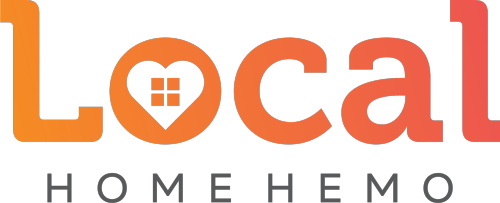Bringing Dialysis Home Reels
Inspiring Conversations on Home Hemodialysis and
Patient-Centered Care.

Our List of Episodes
A Deep Dive into the Changing Landscape of Kidney Care.
REELS 1
The Future of Dialysis is Here
The world of dialysis is evolving, and the shift toward home-based treatments is happening now. In this episode, we explore the driving forces behind this transformation—policy changes, insurance adaptations, and the growing push for patient-centered care. If you or a loved one has kidney disease, this is a conversation you need to hear.
REELS 2
The Problem with In-Center Dialysis
For decades, in-center dialysis has been the default treatment for kidney failure. But is it the best option? We discuss the limitations of traditional dialysis—its timeconsuming nature, health risks, and negative impact on quality of life—while shedding light on why home dialysis remains underutilized.
REELS 3
The Government s Push for Home Dialysis
A major policy shift began in 2019 with the Executive Order on Advancing American Kidney Health. This initiative set the ambitious goal of ensuring 80% of new kidney failure patients receive either a transplant or home dialysis by 2025. Tune in to learn how this order is reshaping kidney care.
REELS 4
Medicare, Telemedicine, and the Policy Shift
The healthcare system is finally catching up. With Medicare s new incentives and telemedicine reforms, home dialysis is more accessible than ever. We break down the recent policy changes that are making it easier for patients to receive treatment from the comfort of their homes.
REELS 5
Technology is Changing Home Dialysis
Today’s dialysis machines are smaller, smarter, and more user-friendly than ever before. From portable devices to remote monitoring, we explore the technological advancements that are eliminating previous barriers and making home dialysis a viable option for more patients.
REELS 6
Insurance is Catching Up—What It Means for You
Home dialysis is becoming more financially feasible. In this episode, we discuss how Medicare and private insurers are expanding coverage, increasing reimbursements, and introducing new flexibility in employer-sponsored plans. Find out what this means for your treatment options.
REELS 7
The Role of Staff-Assisted Home Dialysis
While home dialysis offers freedom, managing treatments alone can be overwhelming. That s where staff-assisted home dialysis comes in. We discuss how trained professionals can support patients in their homes, making treatments easier, safer, and more effective.
REELS 8
The Best of Both Worlds Flexibility & Support
No more struggling with setup or missing treatments due to caregiver burnout. In this episode, we highlight how staffassisted home dialysis combines the independence of home treatment with the expertise of healthcare professionals, giving patients peace of mind.
REELS 9
Advocacy, Education, and the Road Ahead
Despite progress, challenges remain. Not all nephrologists are trained in home dialysis, financial incentives still favor in-center care, and many patients don t know their options. Change starts with awareness. Join us as we discuss how advocacy, education, and action can make home dialysis the standard not the exception.
REELS 10
The Power of Your Plate
What if your dinner plate was actually a powerful tool for kidney health? Learn how diet changes can make all the difference for those with kidney disease.
REELS 11
Understanding Your Kidneys
Your kidneys are your body’s natural filtration system! Discover why diet matters so much when these vital organs aren’t functioning at their best.
REELS 12
The Kidney-Friendly Food Guide
From colorful bell peppers to lean proteins – discover the foods that support kidney function and may help slow disease progression. Your kidney-friendly shopping list starts here!
REELS 13
Foods That Harm Your Kidneys
These common foods could be silently damaging your kidneys. Learn which high-sodium, high-potassium, and phosphorus-rich foods to avoid when managing kidney disease.
REELS 14
Personalized Kidney Nutrition
Not all kidney diets are created equal! Learn how dietary needs change with different stages of kidney disease and why personalized nutrition matters.
REELS 15
Simple Steps for Kidney-Friendly Eating
Overwhelmed by dietary changes? These simple strategies make kidney-friendly eating manageable and sustainable. Small changes, big impact.
REELS 16
Taking Control of Your Health
The right food choices empower you in your kidney health journey. Remember to share this vital information with others who might benefit! (Always consult healthcare providers before making dietary changes.)
REELS 17
Grow Your Home Dialysis Program with Confidence
Ready to scale your home dialysis program with real, measurable results? At Local Home Hemo, we partner with providers who are serious about patient success and long-term program growth. Our innovative, staff-assisted approach is built to support patients and boost retention—because starting a program is one thing, but keeping it thriving is what sets you apart.
REELS 18
Innovation Challenges in Nephrology
Dr. Qasim discusses the historical lack of innovation in nephrology during his 15-year career, noting how the 2019 Executive Order on Advancing American Kidney Health helped jumpstart progress. He highlights recent pharmaceutical advancements like SGLT2 inhibitors and GLP-1 agonists, along with improvements in dialysis machine interfaces and healthcare policies.
REELS 19
Home Dialysis Adoption Goals
A focused discussion on the ambitious goal of having 80% of new ESRD patients treated at home or receiving transplants. Dr. Kassam shares his perspective that while the target may seem unattainable, setting high benchmarks drives meaningful progress. He explains how nephrologists’ analytical nature tends to make them slower adopters of new technologies compared to other medical specialties.
REELS 20
Accelerating Innovation Adoption in Nephrology
Our team member asks for strategies to encourage faster adoption of innovations among nephrologists. Dr. Qasim suggests monetary incentives like the transplant bonus ($15,000 to physician practices) and integrating value-based care principles into fellowship training programs, including optimal dialysis start, home dialysis encouragement, and appropriate medication protocols.
REELS 21
Future Technological Changes in Nephrology
The conversation shifts to necessary changes in nephrology over the next five years, with Dr. Qasim emphasizing the importance of integrating artificial intelligence as “augmented intelligence” to enhance patient care. He explains how AI applications can help identify patients at risk for CKD progression earlier and identify better candidates for home dialysis.
REELS 22
Home Dialysis Patient Selection
Dr. Qasim shares his philosophy that clinicians should assume all patients are candidates for home dialysis until proven otherwise, similar to the “fistula first” approach. He discusses his detailed patient assessment process covering home situations, pets, family support, and insurance coverage, noting that only specific circumstances like housing instability or cognitive limitations should exclude patients from home options.
REELS 23
Effective Home Dialysis Advocacy
The final segment explores Dr. Qasim approach to advocating for home dialysis, where he emphasizes the importance of being a “salesman” for home treatment options. He describes how he addresses patients’ common fears about being alone during home treatments by highlighting 24/7 nursing support, the benefits of daily dialysis, and fewer dietary restrictions compared to in-center treatment.
REELS 24
Challenges of Home Dialysis – Focus on Hemodialysis
A discussion about the challenges patients face with home hemodialysis, particularly self-cannulation (inserting needles) and care partner burnout. The nephrologist shares experiences from previous practice, noting psychological hurdles for patients self-cannulating and potential relationship strain when partners assist. Suggests implementing periodic “home holidays” where patients temporarily return to in-center dialysis to prevent burnout.
REELS 25
Staff-Assisted Home Hemodialysis Inquiry
Brief exchange about staff-assisted home hemodialysis, where professional nurses would handle dialysis administration in patients’ homes. The nephrologist has limited experience with this model and notes potential insurance coverage challenges, while the interviewer mentions their company’s commitment to expanding this option.
REELS 26
Comparing Peritoneal Dialysis and Home Hemodialysis
Discussion about why peritoneal dialysis (PD) is more common than home hemodialysis. The nephrologist explains personal preference for starting patients on PD to preserve arm vasculature for potential future access needs. Key barriers to home hemodialysis adoption include the psychological hurdle of self-cannulation and aesthetic concerns about fistulas, while noting how provider biases might influence treatment recommendations.
REELS 27
Reducing Barriers to Home Dialysis Access
Conversation about potentially using intravenous catheters for home hemodialysis to reduce access barriers. The nephrologist discusses the evolution from “fistula first” to “catheter last” approaches and advocates for individualizing treatment based on patient age and needs. Notes that long-term catheter use impacts dialysis center quality metrics but may be appropriate for elderly patients with shorter life expectancies.
REELS 28
Supporting Nephrologists in Industry Partnerships
Brief discussion about how companies can better support nephrologists. The key recommendation is ongoing engagement beyond the initial sale, including thorough implementation support and regular follow-up. Emphasizes the importance of “handholding” during early adoption phases to ensure successful integration into clinical workflows and focus on customer retention.
REELS 29
Benefits of Peritoneal Dialysis vs. Home Hemodialysis
Discussion comparing peritoneal dialysis (PD) benefits over home hemodialysis, highlighting three key advantages: avoiding self-cannulation challenges, preserving arm vasculature, and providing more gentle treatment that helps maintain residual kidney function. The nephrologist emphasizes how PD patients often continue urinating, which is beneficial since kidneys perform multiple important functions.
REELS 30
Closing Conversation and Future Collaboration
Brief closing remarks where the interviewer thanks the nephrologist for sharing perspectives on patient care. The nephrologist inquires whether the company offers peritoneal dialysis services. The interviewer explains they currently focus on home hemodialysis but notes growing interest in peritoneal dialysis services based on consistent feedback from physicians and patients.
REELS 31
Potential for Staff-Assisted Peritoneal Dialysis
Discussion about how professional nurses might support peritoneal dialysis patients who have physical limitations (dexterity issues, arthritis, vision problems) but could manage with setup assistance. The nephrologist provides candid feedback that staff-assisted home dialysis is a “niche of a niche” with limited insurance coverage and suggests broadening services beyond just home hemodialysis to increase referral opportunities from nephrologists.
REELS 32
Business Model and Value-Based Care Opportunities
Conversation about the business viability of staff-assisted dialysis services. The interviewer explains that while the market is limited, profit margins are substantial, and there’s opportunity within value-based care models due to potential reduction in re-hospitalization rates. They discuss partnerships with value-based care providers who are excited about the benefits of having nurses provide in-home monitoring. The interviewer emphasizes their company serves as a complementary “bolt-on solution” rather than competing with kidney centers.
Help More ESRD Patients Live Life on Their Terms
Click below to schedule a time to speak with a Local HomeHemo Care Specialist about bringing this innovative model to your patient community.
